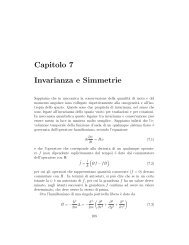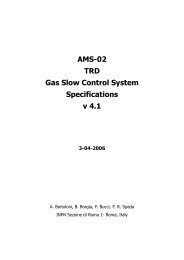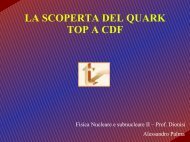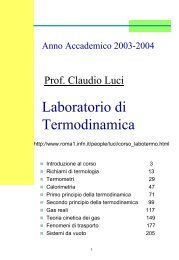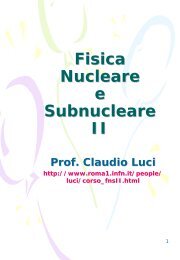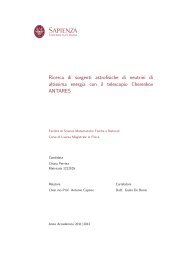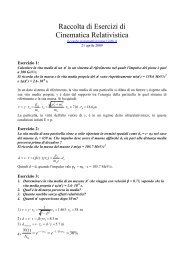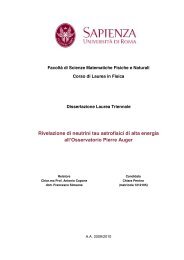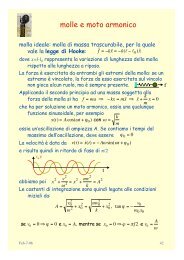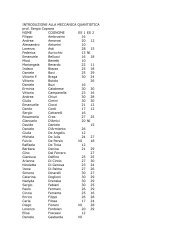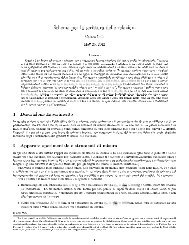Create successful ePaper yourself
Turn your PDF publications into a flip-book with our unique Google optimized e-Paper software.
• If La < 0(counterrotatingorbits),<strong>the</strong>potentialV − is definite<br />
negative and V + (which is negative at r + )vanishesat<strong>the</strong><br />
ergosphere r = r S+ =2M.<br />
• The study <strong>of</strong> <strong>the</strong> derivatives <strong>of</strong> V ± , which is too long to be<br />
reported here, tells us that both potentials, V + and V − ,have<br />
only one stationary point.<br />
In summary, V + (r) andV − (r) have <strong>the</strong> shapes shown in Figure 4.1<br />
where in <strong>the</strong> two panels we show <strong>the</strong> cases La > 0(up)andLa < 0<br />
(down), respectively. Once we have drawn <strong>the</strong> curves V + (r),V − (r)<br />
L <br />
V<br />
V<br />
r + r S+<br />
La > 0<br />
V +<br />
V <br />
La < 0<br />
V +<br />
r r + S+<br />
r<br />
r<br />
L <br />
V <br />
Figure 4.1: The potentials V + (r) andV − (r), for corotating (La > 0) and counterrotating<br />
(La < 0) orbits. The shadowed region is not accessible to <strong>the</strong> motion<br />
<strong>of</strong> photons or o<strong>the</strong>r massless particles.<br />
for assigned values <strong>of</strong> a, M and L, wecanmakeaqualitativestudy<br />
74



